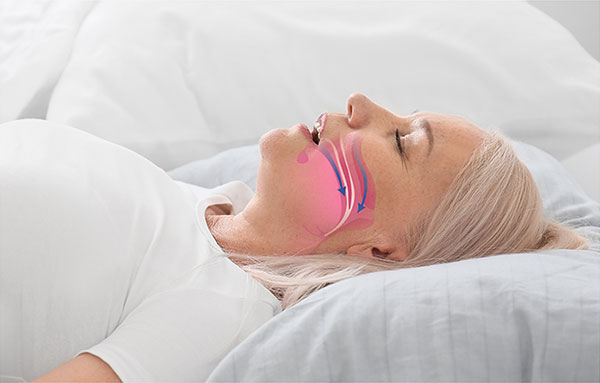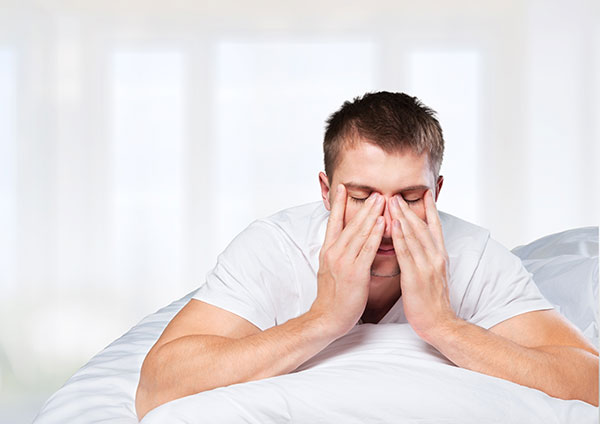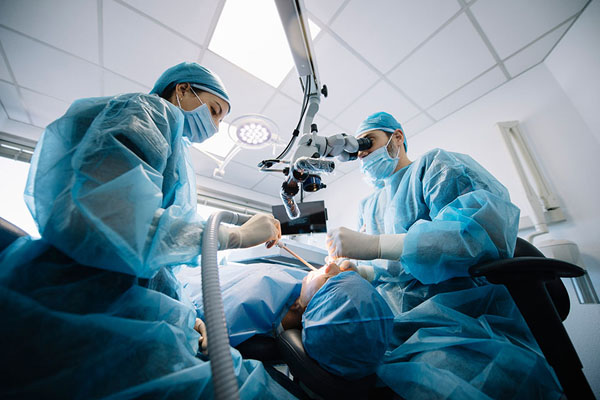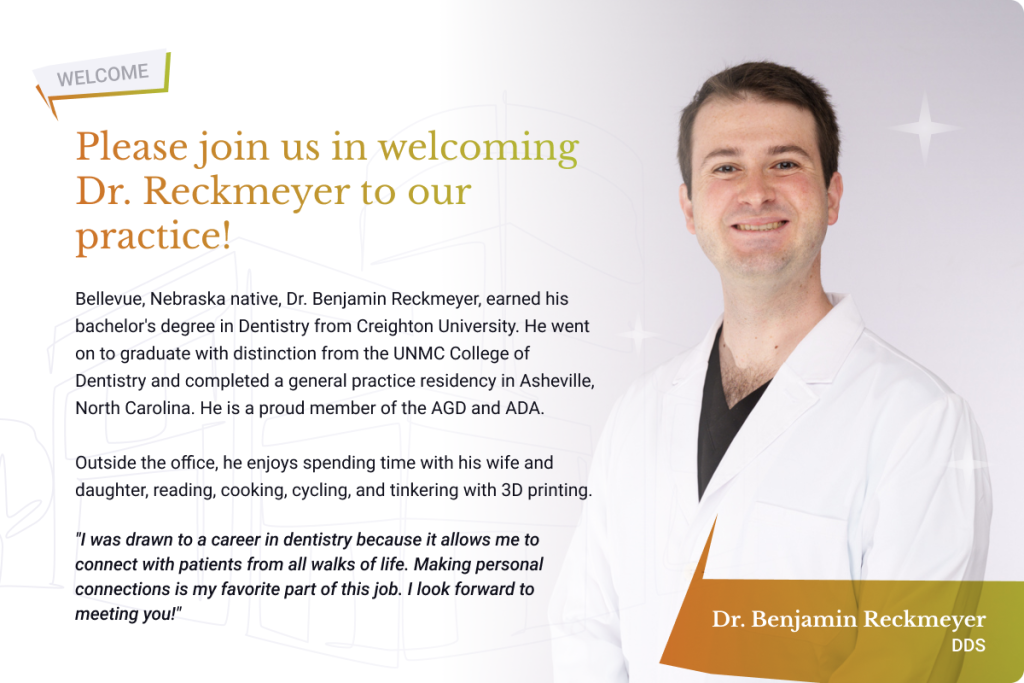Obstructive Sleep Apnea
Do You Have Obstructive Sleep Apnea?
Do you wake up every morning feeling exhausted, struggling to concentrate throughout the day, and experiencing constant irritability? These symptoms could be more than just a lack of quality sleep — they could be signs of a sleep disorder called obstructive sleep apnea (OSA).
If you’re struggling with obstructive sleep apnea, or you’re unsure if you have a sleep disorder, contact our Manhattan dentist to schedule an evaluation.
What Is Obstructive Sleep Apnea?
Obstructive sleep apnea is a common sleep disorder characterized by recurrent episodes of upper airway collapse during sleep, resulting in sleep-disordered breathing and disrupted sleep. Mild sleep apnea is a less severe form of the condition, while severe sleep apnea represents a more serious manifestation. Having obstructive sleep apnea diagnosed is crucial for proper treatment and management.
Impact on Your Health
Ignoring OSA can result in major health implications. The most common risks include:
- Heightened risk of cardiovascular disease
- Hypertension
- Cognitive impairment
- Accidents stemming from excessive daytime sleepiness
Symptoms of Obstructive Sleep Apnea
Symptoms of OSA can show differently during nighttime and daytime.
Nighttime Symptoms
The nighttime symptoms of obstructive sleep apnea include:
- Loud snoring
- Gasping
- Choking
- Witnessed pauses in breathing during sleep
- Recurrent limb movements during sleep
- The feeling of tiredness or exhaustion upon awakening
These symptoms can disrupt not only the individual’s sleep but also the sleep of their bed partner. If you or your bed partner notice any of these symptoms, especially when trying to fall asleep, seek medical assistance for proper evaluation and diagnosis.
Daytime Symptoms
During the day, individuals with obstructive sleep apnea may experience the following symptoms:
- Excessive sleepiness
- Morning headaches
- Irritability
- Difficulty concentrating
- Depression
These symptoms can have a considerable effect on a person’s quality of life, affecting work performance, social interactions, and overall well-being.
OSA Causes and Risk Factors
Obstructive sleep apnea can have various causes and risk factors, including:
- Obesity: One of the most significant risk factors for OSA is obesity. Excess fat in the neck and throat can put pressure on the airway, making it more likely to collapse during sleep.
- Neck Circumference: Individuals with a larger neck circumference are at higher risk, as a thicker neck may have a narrower airway.
- Gender: Men are more likely to develop OSA than women, although the risk for women increases if they’re overweight.
- Age: OSA is more common in middle-aged and older adults. However, it can occur at any age, including in children.
- Family History: There is evidence to suggest that OSA can run in families, indicating a genetic component.
- Smoking: Smoking can increase inflammation and fluid retention in the upper airway, making it more susceptible to obstruction.
- Alcohol and Sedative Use: The relaxation of throat muscles due to alcohol or sedative use can increase the likelihood of airway collapse during sleep.
- Nasal Congestion: Chronic nasal congestion or a deviated septum can make it harder to breathe through the nose, leading to increased reliance on mouth breathing, which can contribute to OSA.
- Medical Conditions: Certain medical conditions, such as hypothyroidism, acromegaly, and polycystic ovary syndrome (PCOS), have been associated with an increased risk of OSA.
- Enlarged Tonsils and Adenoids: In children, enlarged tonsils and adenoids can obstruct the airway and lead to OSA.
- Craniofacial Abnormalities: Structural abnormalities in the face and skull can affect the size and shape of the airway, increasing the risk of obstruction.
- Gastroesophageal Reflux Disease (GERD): The association between GERD and OSA is complex, but GERD can exacerbate OSA and vice versa.
- Menopause: Postmenopausal women may have an increased risk of OSA due to hormonal changes and weight gain.
Diagnosing Obstructive Sleep Apnea
Consultation and Medical History
During a consultation for OSA, a sleep specialist will conduct an evaluation and diagnosis of the condition. This can include:
- A comprehensive medical history review
- Physical examination, including an examination of the throat, neck, and mouth
- Potentially a sleep study to assess the severity of the condition
Sleep Studies
A sleep study is conducted either in a specialized laboratory or at home using a portable monitor, and is considered the most reliable approach for diagnosing obstructive sleep apnea, as it measures breathing disruptions during sleep.
During a sleep study, the following are monitored:
- Respiration
- Motor activity
- Cardiac rate
- Time taken to enter different stages of sleep
After a confirmed diagnosis, you’ll return to our dental office in Manhattan where we’ll go over your treatment options.
Treatment Options for OSA
Lifestyle Changes
Lifestyle changes can play a significant role in alleviating OSA symptoms. Changes that may be recommended include:
- Weight loss: Reducing weight has been observed to reduce the intensity of obstructive sleep apnea.
- Abstaining from alcohol and sedatives: These substances can relax the muscles of the upper airway and exacerbate OSA symptoms.
- Practicing good sleep hygiene: Maintaining a consistent sleep schedule and creating a sleep-conducive environment can improve sleep quality and reduce the severity of OSA symptoms.
CPAP
Continuous positive airway pressure (CPAP) therapy is the most effective treatment for severe obstructive sleep apnea. CPAP involves the delivery of pressurized air through a bedside machine and into the nose and/or mouth to maintain the airway open during sleep. Regular use of CPAP for moderate sleep apnea has been shown to significantly improve cognitive function, and general health status, and reduce the risk of cardiovascular complications.
Oral Appliances
Oral appliances are another treatment option for OSA. These specialized mouthpieces are designed to maintain the position of the jaw and tongue, reducing the pressure on the windpipe.
Surgery
Surgical interventions, such as uvulopalatopharyngoplasty (UPPP), genioglossus advancement (GA), or even a tracheostomy, can be considered for severe cases of OSA or when other treatments have failed. However, this is the rarest treatment option as it’s the most invasive.
Frequently Asked Questions
What causes obstructive sleep apnea?
Obstructive sleep apnea is caused by a blockage of the airway due to several factors, such as being overweight or obese, having large tonsils, or changes in hormone levels.
Can you fix obstructive sleep apnea?
Although obstructive sleep apnea is usually not curable, treatment can effectively assist the majority of individuals in reducing breathing interruptions, enhancing sleep quality, and mitigating health-related repercussions.
What is the difference between obstructive sleep apnea and central sleep apnea?
Obstructive sleep apnea (OSA) is characterized by a physical blockage or collapse of the upper airway during sleep, leading to repeated interruptions in breathing. Central sleep apnea (CSA) is a neurological condition where the brain fails to send proper signals to the muscles that control breathing, causing pauses in breathing without physical airway obstruction.
Get the Treatment You Need for Sleep Disorders
Obstructive sleep apnea is a prevalent and potentially severe sleep disorder that affects a significant portion of the global population. If you’re struggling with a treatment that works best for you, contact our dentist in Manhattan today. We’ll set up your appointment.




